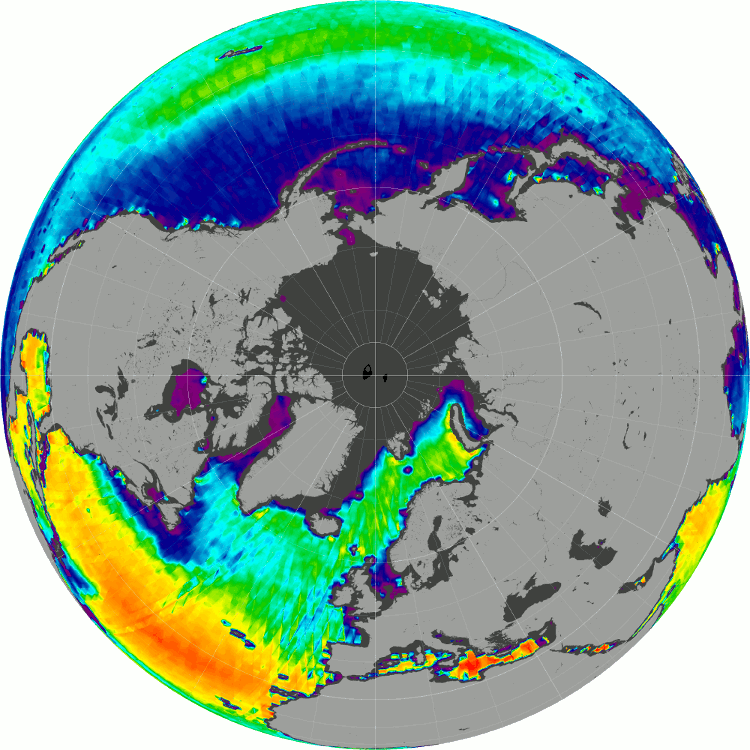Arctic Salinity
This post is an informational .gif that I put together about annual variability in the salinity of the Arctic Ocean (and North Atlantic/Pacific).
As I noted in a recent book review, I've read a number of books about the sea this year. This post is an effort to understand more about the way water circulates through the ocean and the science that explains its currents. Thermohaline circulation is the concept that differences in temperature and salinity affect the density of water; differences in density, in turn, act as a driving force for significant currents.
The temperature aspect is fairly straightforward, but salinity varies in complex ways both spatially and over the course of a year. The Aquarius satellite monitors the ocean's salinity from space. I took the images (see here for the originals) they had from a one year period (July 2012 – June 2013) and compiled them into the following .gif:

(purple = 3%, aqua/green = 3.5%, red = 4%, grey = no data (e.g. covered with ice)) Also, to be clear, all of the frames belong to Aquarius; all I did was compile them into the animated .gif above.
During the summer (the first few frames of the .gif), there is a lot of melting in the Arctic. Ice is 100% water, 0% salt, so it dilutes the salinity as it melts (and concentrates it as it freezes*). Additionally, rivers like the Mackenzie and the great rivers of Siberia dump a lot of fresh water into the ocean during the spring freshet and early summer.
*This is another application of this effect.
A famous current that is driven by thermohaline circulation is the Gulf Stream. It is clearly visible on Windy.com, a weather visualization website that I learned about from a co-worker (if you click the buttons on the side of the map, you can also see wind, waves, pressure, etc.).
I mentioned in this book review that seas with a high salinity and narrow opening such as the Mediterranean and Red Sea tend to have strong inward currents at their mouths. Conversely, the Baltic Sea has a low salinity, which also influences the currents at its outlet.
Aside from salinity, I'd like to learn more about eddies and gyres to better understand ocean science. Here are a few links I found for future reading:
- https://www.gfdl.noaa.gov/ocean-mesoscale-eddies/
- Gill, Green, & Simmons, 1974
- http://www.whoi.edu/main/topic/currents--gyres-eddies
I also thought this would be a good place to share this cute ditty by Lewis Richardson:
Big whorls have little whorls
Which feed on their velocity,
And little whorls have lesser whorls
And so on to viscosity.
In the past, understanding oceanic currents (e.g. Benjamin Franklin's research on the Gulf Stream) and winds was very important for marine navigation. Nowadays, it is less of a constraint on marine traffic, but it is definitely still an interesting topic in my opinion.
If you liked this post, here's another one you may want to check out.